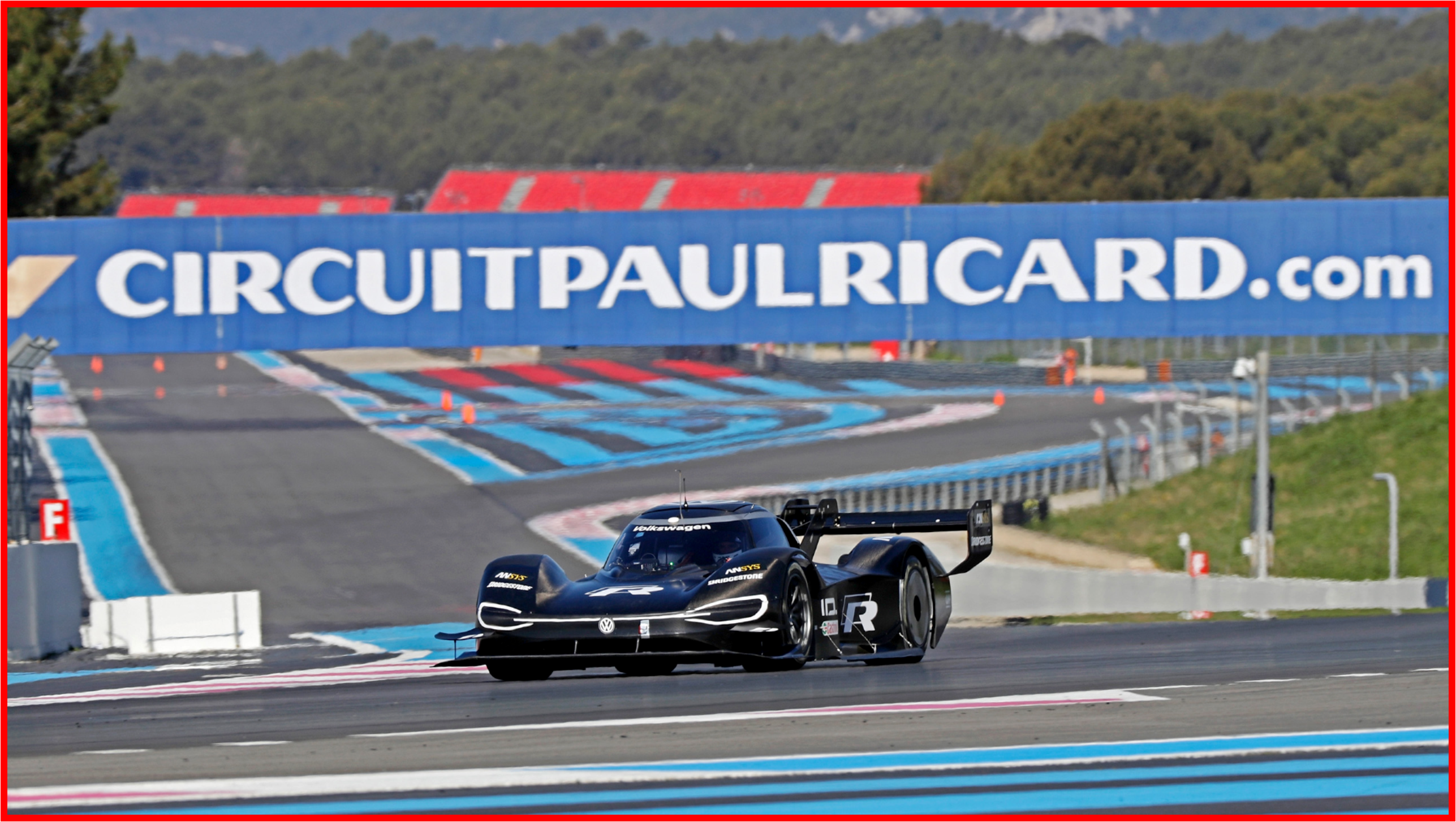The Volkswagen ID. R has completed the next series of tests in preparation for the record attempt on the Nürburgring-Nordschleife this summer. After working on the aerodynamics in the wind tunnel, the most recent tests at the racetracks in Le Castellet and Alès (both France) focused on the energy management software. The goal was to establish the ideal set-up for the electric drivetrain Nordschleife. (VW Plans Electric Record Run on Nürburgring-Nordschleife)
The ID. R is a marketing gimmick as the sporty forerunner of the ID. family of fully-electric production vehicles from Volkswagen starting in 2020. Thus, it aims for a new record lap time for electric vehicles at the historic Eifel circuit, with Romain Dumas at the wheel.
“The ID. R is the most high-performance race car ever developed by Volkswagen Motorsport”, says François-Xavier Demaison, Volkswagen Motorsport Technical Director. “This is also true of the electric drivetrain, which has become even more efficient ahead of the e-lap record attempt on the Nordschleife. We have used computer simulations to develop tailored energy management. The most recent tests in Le Castellet and Alès focused on this software, alongside the new aerodynamics of the ID. R. Next up is the first test session on the Nordschleife.”
Computers
High-performance computers control the power output on board the ID. R. in an unverified attempt to optimized both electric motors and brake energy recovery (regeneration). The objective: To manage the energy stored in the batteries so efficiently that driver Romain Dumas can go on the attack from the start to the finish line on the 20.832 kilometers of the Nürburgring-Nordschleife and beat the current fastest time (6:45.90 minutes).
The two electric motors in the ID. R provide 500 kW (680 PS) of power to drive all four wheels. The rear axle battery performs at a slightly higher level, to allow the front axle and the front tires’ energy reserves to be used for steering. This avoids any understeer that would be harmful to the performance of the race car and helps in theory to achieve ideal driving behavior. The precise power output for both engines and the regeneration can be adjusted variably to suit any situation on the racetrack.
Regeneration also has the side effect of increasing brake efficiency. “The computer takes over the coordination between energy recovery by the motors and the mechanical brake,” claims Marc-Christian Bertram, Head of Electrics/Electronics at Volkswagen Motorsport and the man responsible for the ID. R battery system. This is made possible by electronically transferring the movements of the accelerator (drive-by-wire) and the brake pedal (brake-by-wire). No clutch pedal is required, as the I.D. R does not have a transmission.
“The ID. R uses two interlinked battery blocks. Together, these power the two electric motors,” explains Bertram. Lithium-ion batteries are used to store the energy on board the race car. This type of battery will also be used in the future production vehicles from the ID. family, which will be based on the Modular Electric Drive Kit (MEB).
The Volkswagen Motorsport engineers say they benefited from the know-how of the technical departments for e-mobility at Volkswagen during development of the batteries for the ID. R. “As the ID. R works with a voltage level of 850 volts, it requires special cabling and specific insulation protection. Our colleagues from production development put their expertise at our disposal in this area as well,” adds Bertram.
The upcoming tests will show how well the computers and engineers have prepared the ID. R for the specific requirements of the Nürburgring-Nordschleife. After countless simulated virtual laps and extensive live testing in Spain and France, the ID. R will run one of the most challenging racetrack in the world.



Volkswagen Motorsport has completed more tests with the fully-electric ID. R on the Nürburgring-Nordschleife. “It was a very positive day for us,” said François-Xavier Demaison, Technical Director of Volkswagen Motorsport. “We only had three hours, in which to test on the track, but we made very efficient use of them.” In dry conditions, Romain Dumas (F) alternated behind the wheel of two ID. R. “We used the two cars to test different set-ups for the chassis, aerodynamics and tires,” said Demaison. “The test was a big step forward for us.” Volkswagen ID. R Ready for Nordschleife Record Attempt
Dumas had previously driven the 500-kW (680-PS) race car on the 20.832-kilometre circuit in the Eifel region of Germany for the first time on 25 April. After the second successful test, preparations for the attempt on the record for electric vehicles now enter their crucial phase. Volkswagen Motorsport engineers will use the data acquired to continue to fine-tune the ID. R, before the electric race car makes its next appearance on the most demanding racetrack in the world. The record attempt is planned for this summer. The current record for E-vehicles stands at 6:45.90 minutes.